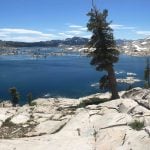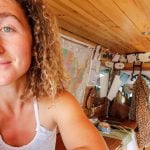We Should All Stop Going to Creeksgiving
In 2017 I spent my first Creeksgiving in Indian Creek.
This day would be the day my friends Marlene and Schuyler would be married on top of the South Six shooter. I would officiate their wedding in a leopard print robe in front of dozens of our drunken cheering companions. That evening, we returned to Creek Pasture campground to celebrate Creeksgiving with even more friends, and the day faded into a hedonistic celebration of beer, turkey, and pie.
Later, a close friend and I would reflect upon this Creeksgiving as one of the best days of our lives, a perfect ten.
This was also my first year as a rock climber, and although this day still holds a special place in my memory, I have come to reflect on other aspects of that Creeksgiving that were not so perfect.
During the week leading up to Creeksgiving, I remember seeing every parking lot down Beef Basin full to the brim with cars and tents. I sat in the driver’s seat as the washboard road jangled and bumped me along, waving good morning to ten or twenty people every half mile or so.
I remember driving to Creek Pasture Campground the night of the wedding and seeing every conceivable space in the loop taken up by a parked car. Subaru’s, sprinter vans, Toyota trucks and more were parked, bumper to bumper, along either side of the loop. Grass and bushes be damned.
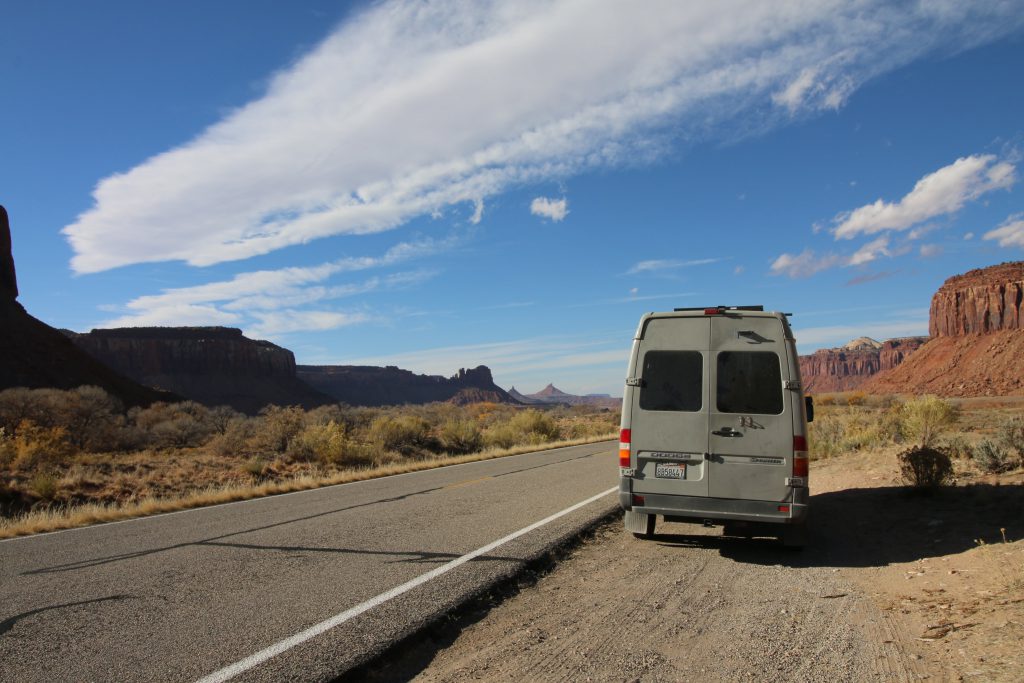
As I slowly drove into camp, headlights flashing through a low cloud of dust left by the car ahead of me, a pack of dogs came bursting out of the gloom and into the path of my van. Maybe ten dogs were in a tussle on the road. A writhing mass of fur, teeth, and tails kicking up dust, as each dog fought to gain control of a flashing green and blue lighted tennis ball. One dog emerged from the pack, wagging its whole body in excitement with the prize in its teeth.
It ran off towards the creek, and the pack followed. Dozens of paws upturning the earth as the mass of fur and teeth disappeared into the night.
The next day I remember sitting on top of my van and facing the road. It was lit up with the bright red of hundreds of brake lights. A glowing red ribbon carved through the heart of Indian Creek. I couldn’t believe how many people there were. The number of people who had shown up for this event, and then left the next day, was mind-blowing.
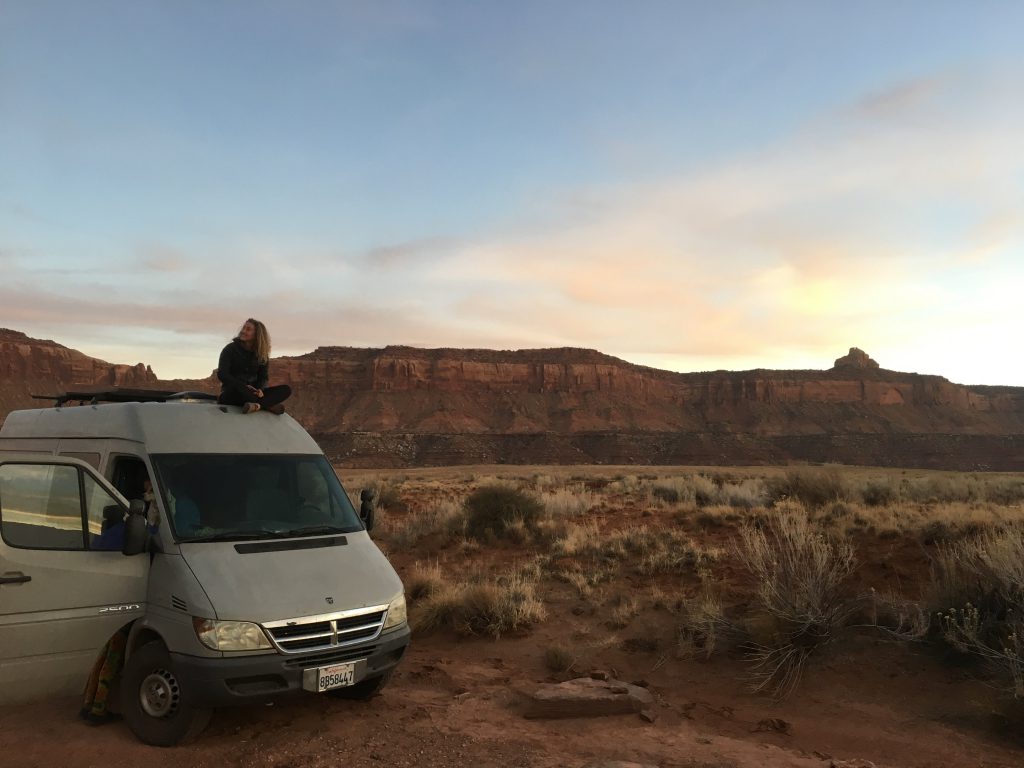
There were so many cars it looked like rush hour in Los Angeles, instead of a remote stretch of a highway full of cows, deer, and turkeys.
The picture I am hoping to paint here is that there are too many people going to Creeksgiving. Indian Creek cannot accommodate them all.
The Utah desert has an incredibly delicate ecosystem. The cryptobiotic soil, which takes decades to grow, is the sustaining life force of this desert. A simple misstep by a climber or crag dog can undo decades of growth.
“Impacted areas may never fully recover. Under the best circumstances, a thin veneer of biological soil may return in five to seven years. Mature crusts can take 50 years to strengthen. Lichens and mosses may take hundreds of years to recover.”
-NPS (source: https://www.nps.gov/articles/seug-soil-crust.htm)
Those dozens upon dozens of people camped down beef basin road had no access to a pit toilet except for the one at the mouth of Beef Basin, which is a ten to thirty-minute drive away. I guarantee, not all of those people drove to the toilet or packed it out.
In many cases, digging cat holes is an acceptable way to dispose of human waste. But not in Indian Creek.
Human waste can seep into the groundwater and create an inhospitable environment for plants to grow. Dog waste can do the same, and I know people are not as good about picking up their dog’s poop as they should be.
Many prominent climbing news sources highlight Creeksgiving as a hedonistic mecca for climbing and debauchery, but very few mention the impacts that Creeksgiving is having on the desert. The only article I could find while researching this topic was from the Access Fund: 8 Tips to Minimize Your Impact at Creeksgiving. They also host an annual event in Creek Pasture to raise money and awareness around impact issues in Indian Creek, which is great!
But it’s not enough.
“Creeksgiving has grown too big. We know it.”
– Luke Mehall (source: http://www.alpinist.com/doc/web15y/wfeature-creeksgiving-luke-mehall)
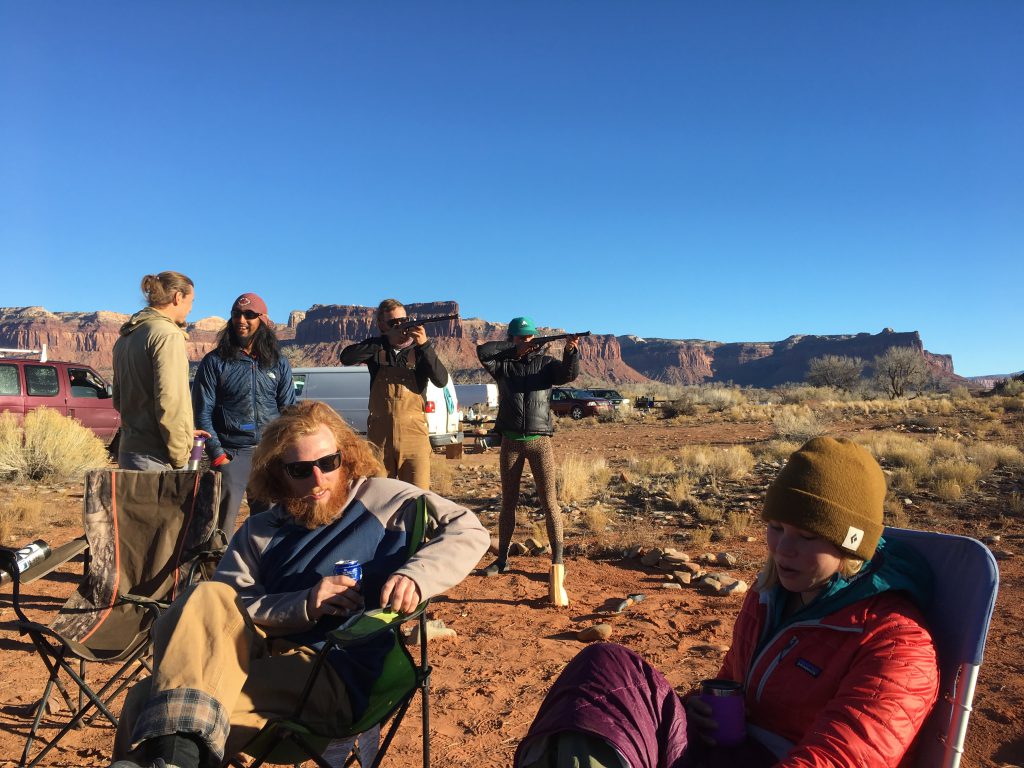
It seems to me that we know climbing is exploding as a sport, and we know more people are climbing outside than ever before, but we aren’t taking into consideration what climbing access means for remote areas like Indian Creek.
There are not enough toilets, not enough campgrounds, too many off-leash dogs, and too many people coming to Creeksgiving.
I think we, the climbing community, should stop going to Indian Creek during Thanksgiving.
Creeksgiving is a tradition of indulgence and a much-needed escape for many climbers. As someone who loves Indian Creek very much, I am very aware of the pain it will cause people to forgo this particular trip. I have indulged in costumed climbing parties, drunken shenanigans at the crag, hell, I even have a stick and poke tattoo of the Indian Creek skyline that was given to me in one of the campsites by a friend on a rest day. I get it.
But we cannot ignore the damages done to this desert anymore.
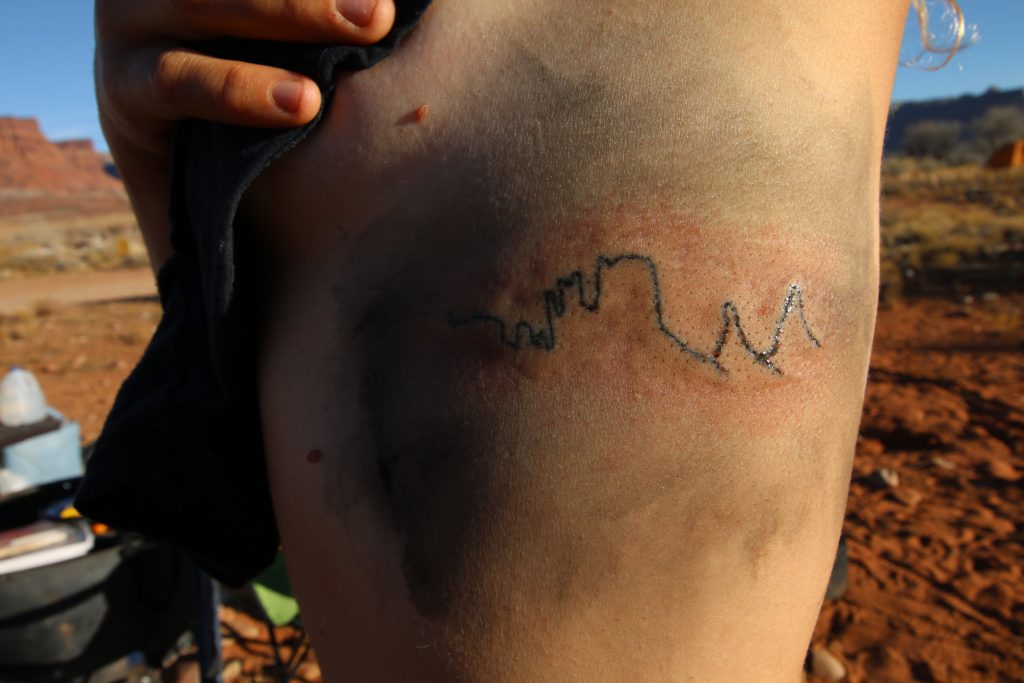
If rock climbers really care about climbing and climbing access, then we have to prioritize taking care of the environments we climb on. If we don’t take the preservation of this land seriously, it will erode away beneath our feet.
This beautiful landscape we can’t seem to get enough of, will dry up into dust and be blown away by the wind.
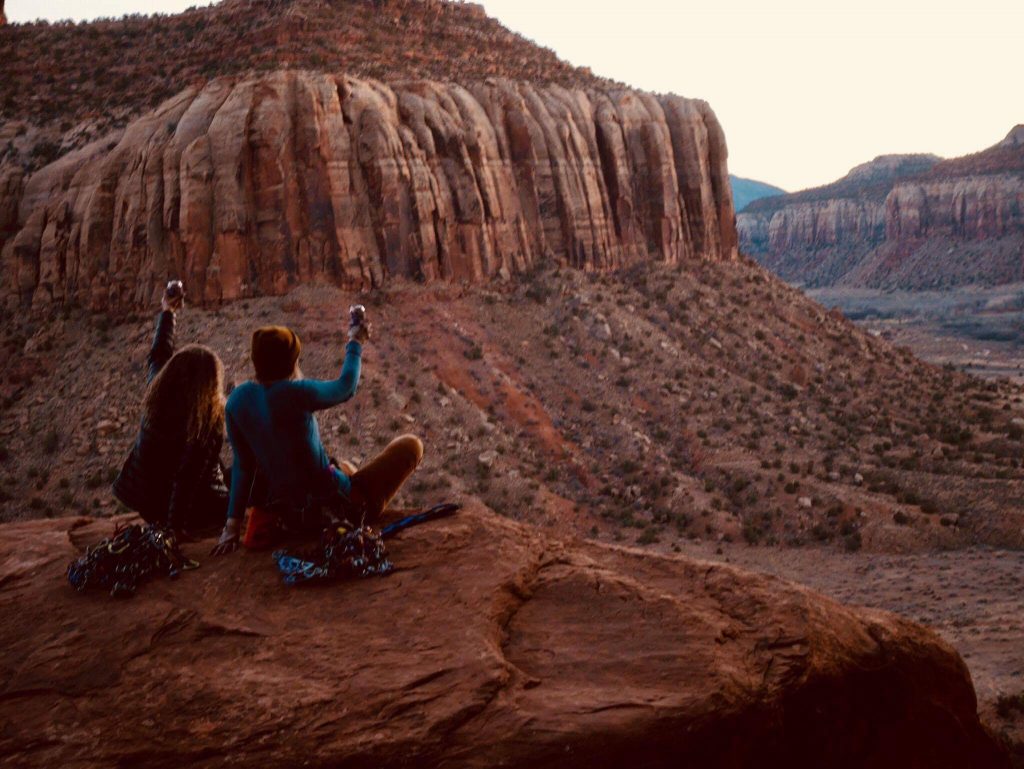
If you are waffling on plans to go to Creeksgiving, I encourage you to go somewhere else. In my experience, rock climbers are a dedicated bunch of hooligans, and I have no doubt that if you put a bunch of them in any parking lot in America during Thanksgiving, they will find a way to have a raucous good time.
We don’t need the Creek to huddle around campfires and drink 3.2% PBR. We don’t need the Creek to bury a turkey in the ground and wear silly costumes to the crag. We don’t even need the Creek to celebrate somewhere remote with good climbing and good temps in late November!
We do need to be stewards of this land and prioritize keeping the climbing areas we love protected for years to come.
About the Gear Tester
Kaya Lindsay is a writer, photographer, and filmmaker with a passion for rock climbing and the outdoors.
In 2016 she converted a Sprinter Van into a tiny home and has been traveling around the US & Canada to pursue her passion for rock climbing. Since hitting the road she has begun a career in filmmaking and is currently working on her One Chick Travels series, highlighting solo female travelers who live and work to pursue an adventurous lifestyle. Her films have been highlighted by major brands such as Backcountry and Outside TV. To fulfill her passion for writing, she chronicles her many adventures in her blog. Professionally, she writes for the adventure sports company Outdoor Prolink and The Climbing Zine. Kaya hopes to spend many more years in her tiny home on wheels, Lyra, and is currently living in Moab Utah.




